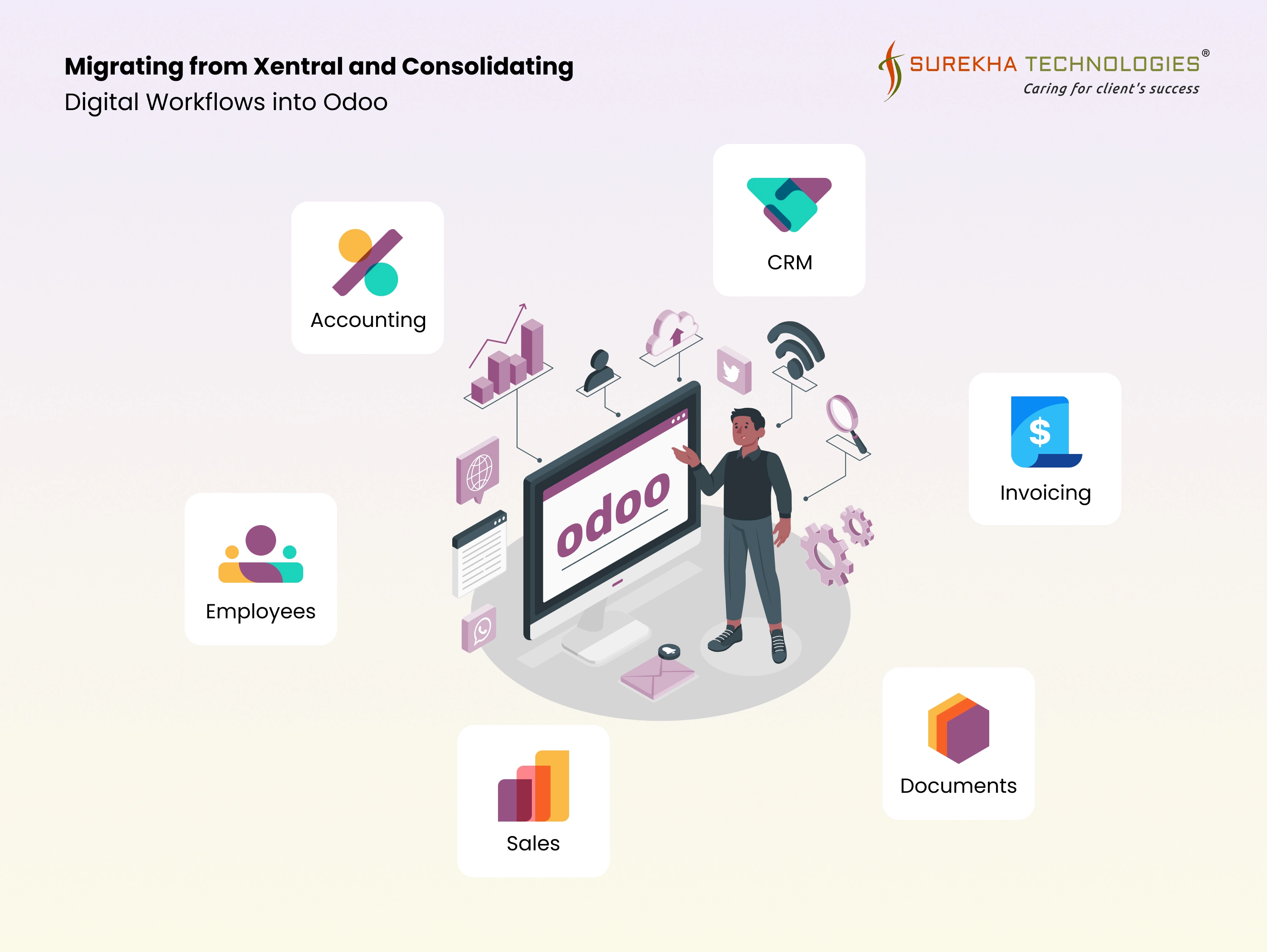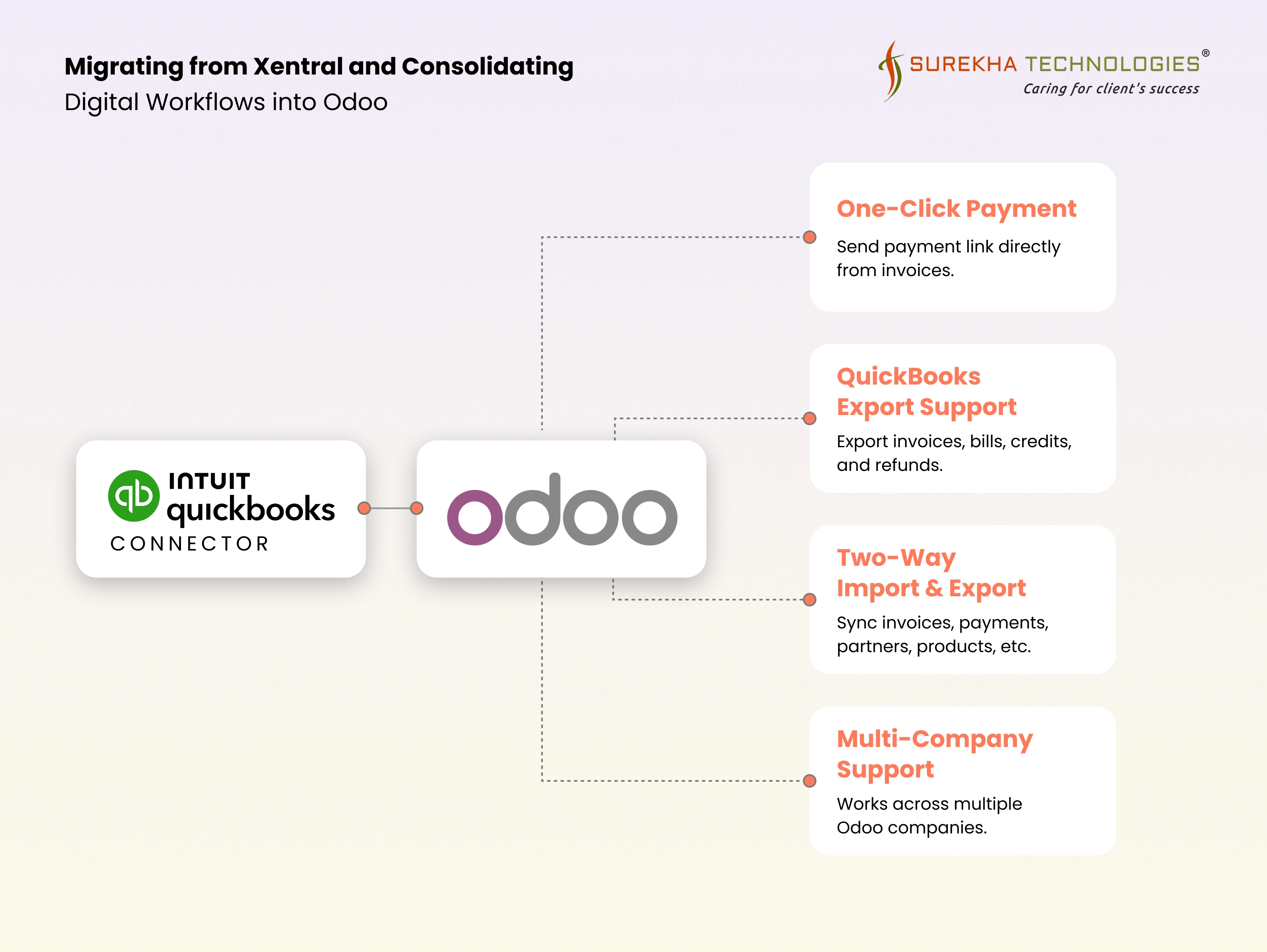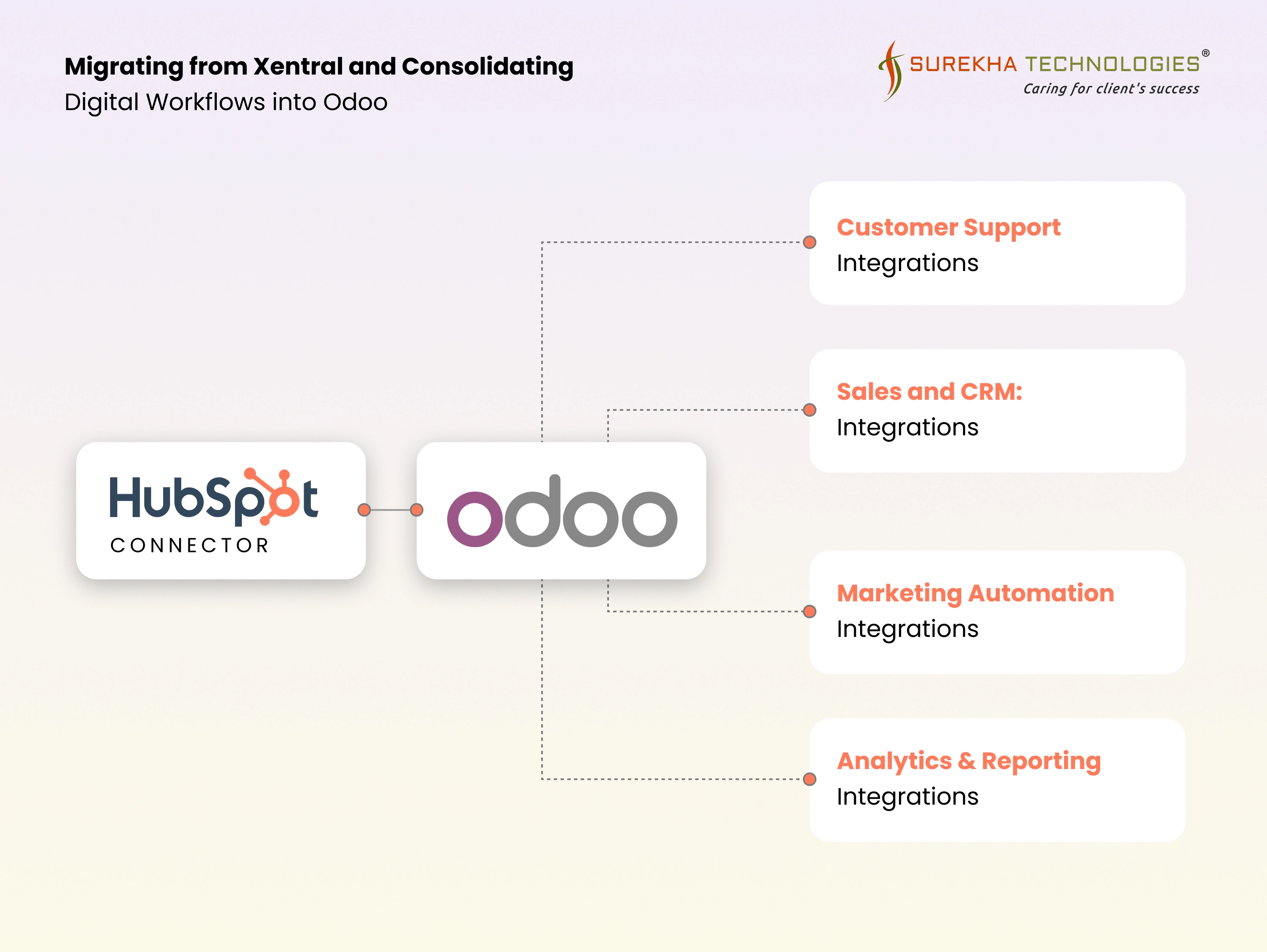Migrating from Xentral to Odoo | Consolidate Digital Workflows - Surekha Technologies
Struggling with your project?
DXP | ERP | E-Commerce | AI-ML | DevOps | Bespoke Solutions
Trusted By
Migrating from Xentral and Consolidating Digital Workflows into Odoo

The company was using Xentral, which led to disconnected workflows and inefficient operations. After migrating from Xentral to Odoo, and integrating tools like HubSpot, QuickBooks, and Personio, they achieved a centralized ERP system streamlining processes, improving data flow, and enabling scalable growth.
Our client is an innovative space company based in Germany, specializing in the development of deployable structures, actuators, and mechanisms for space missions. Launched in 2018, they’ve grown rapidly to support clients across 15+ countries across 4 continents.
- Number Of Employees: 20+
Project Brief
As the company scaled, so did the number of tools they relied on: HubSpot managed the sales pipeline, Personio handled HR operations, QuickBooks was used for U.S. accounting, and Datev for German accounting. While each tool served its purpose, they didn’t talk to each other. Teams were working in isolation with no real-time data flow between departments. For example, Sales had no visibility into Purchase or Finance, and HR data was disconnected from operational reporting. Inventory forecasting was also a concern; managing stock efficiently was becoming increasingly complex.
None of these tools were connected. Each team worked in their own system, with no easy way to share information. Sales didn’t have visibility into what Finance or Purchasing was doing. HR data was completely separate. This led to a lot of manual work, miscommunication, and delays.
Inventory was also a challenge. The company had trouble keeping track of stock and couldn’t forecast demand well, which meant they sometimes had too much or too little of what they needed.
That’s when Surekha Technologies stepped in with expert Odoo consulting. Instead of asking the company to give up the tools they were already comfortable with, we replaced Xentral with Odoo, a flexible, centralized ERP system. Using our Odoo consulting expertise, we connected Odoo with all their existing tools to bring everything into one place.
Now, teams can access the same data in real time, work more efficiently, and make faster, smarter decisions. We also set up Odoo’s inventory forecasting features to help them manage stock more effectively and plan for future growth.
Business Needs & Challenges
The company initially used Xentral to manage key business functions such as sales, HR, and accounting. However, the platform lacked the flexibility and depth required to support their growing operational complexity. Limitations in customization and integration made it difficult to adapt the system to evolving business needs.
Critical business tools like HubSpot (CRM), QuickBooks (accounting), and Personio (HR) operated in isolation, with no centralized platform to unify data and processes. This fragmentation resulted in data silos, inconsistencies, and time-consuming manual coordination between departments.
With multiple systems in play and no streamlined workflows, the team faced increasing administrative burden. Manual data entry, redundant tasks, and limited automation led to inefficiencies, slowed decision-making, and hindered scalability.
While Xentral supported some integrations, it lacked robust APIs and native connectors for many of the tools the company relied on, such as HubSpot and QuickBooks. This made system syncing unreliable and often required manual workarounds or third-party middleware.
Technology Stack & Tools
Implementation Overview
Business Impacts
Sales, HR, and Finance teams were spending too much time on repetitive tasks. That’s now been reduced by around 70%, giving people more room to focus on work that drives results.
Now, everyone from HR to Finance to Sales is looking at the same real-time data. It’s made collaboration easier and has cut down on confusion and duplicated work.
With better forecasting and automated procurement, inventory issues have dropped. There’s less over-ordering, fewer shortages, and far less waste sitting on shelves.
The system handles financial rules for both regions, which means reporting and audits are simpler, and teams stay in line with all requirements.
Before, different platforms meant entering the same info more than once. Now everything’s connected, and duplicate data is no longer an issue.
Things like onboarding, leave tracking, and updates are all automated. HR teams don’t have to chase paperwork anymore, and everything runs more smoothly.



